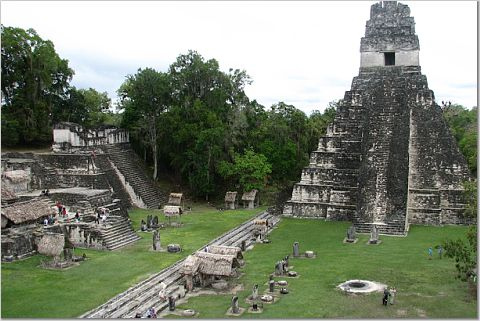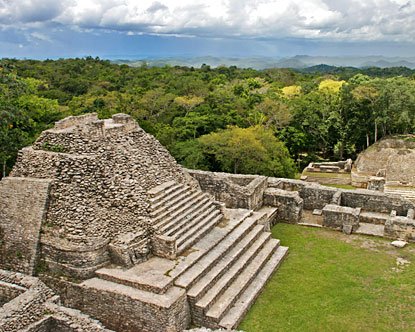Guatemala Mayan Ruins |
Guatemala Mayan Ruins-CivilizationGuatemala includes much of the old Mayan civilization, which may date back as early as 300 BC. The classical Mayan period lasted from about AD 300 to 900 and featured highly developed architecture, painting, sculpture, music, mathematics (including the use of zero), a 365-day calendar, roads, and extensive trade. In the 16th century, an anonymous, native Guatemalan author wrote the country's greatest literary work, now known as the Popol Vuh, or the Sacred Book of the Ancient Maya Quiché. The book relates the history of the Maya-Quiché people, from the beginning of time, when the earth and human beings were created, to the moment of the Spanish conquest. Archaeological SitesMany archaeological sites are found in Guatemala's highlands area as well. Some of these, such as Zaculeu, Iximché, and Gumarcaaj, were thriving cities when Spaniards arrived, the capitals of what were effectively small nations occasionally at war with each other. Tikal National ParkThe Tikal National Park lies within the Maya Biosphere Reserve, 3.9 million acres of protected forests and wetlands that comprise 19% of the Guatemala's land area and 50% of its existing forests.
The reserve contains the largest, intact, tropical forest in Central America, as well as more than 200 archaeological sites, all Maya, including Tikal, El Mirador, Yaxhá, Uaxactún and Dos Pilas. Guatemala Mayan Ruins-DevelopementsAt the beginning of the Preclassic period, people in Guatemala spoke an early form of the Mayan language. These early Maya also decided that living in caves and under palm fronds was passé, so they invented the na, or thatched Mayan hut - still used today throughout much of the country. Where spring floods were a problem, a family would build its na on a mound of earth.
Peten GuatemalaWhile economically exploited, the Maya have also been subject to a political culture of racism and exclusion, underpinned by a state which promotes the culture, values, customs and interests of the minority ladino population. El Zotz - El Peten site is quite close to Tikal. It is considered the most important discovery in the Mayan world since that of Pakal's tomb in Palenque. More info on- Mayan civilization |





